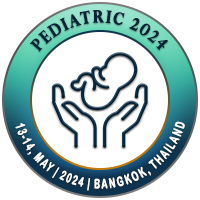
Maribel Domingo Pasaoa
Philippine Children’s Medical Center, PhilippinesTitle: Profile and treatment outcome of infective endocarditis patients admitted in a tertiary medical center from 2005-2016
Abstract
Objective: To determine the clinical profile and treatment outcomes of children with Infective Endocarditis.
Methods: Retrospective descriptive study.
Results: Thirty seven charts reviewed. Male to female ratio of 1:1. Most common chief complaint and physical finding were difficulty of breathing and tachycardia, respectively. Cardiac murmur appreciated except in one case. Seventy percent had VSD, 24% had RHD. Two had no underlying heart disease. Most common associated non-cardiac condition was dental caries, 11% had previous cardiac surgeries. All were neutrophilic, 84% anemic. Hematuria in 73%. 2-D Echo showed vegetation in 97.2%. Forty nine percent had positive growth while 51% of specimens had no growth. Most common isolates were Streptococci (44%), Streptococcus mitis (16%), all sensitive to Penicillin. Empiric Penicillin G (84%) with Gentamicin (76%) or Amikacin (27%) given. Shifting or adding of antibiotics was culture guided or due to worsening condition. Complications in 46%: brain infarct, pericarditis and pulmonary embolism. Majority managed medically. Seven patients (19%) for vegiectomy at Philippine Heart Center. Nine (24%) died during hospitalization. Around half of mortalities had Staphylococcus or Candidemia.
Conclusion: Thirty seven IE cases. Majority had VSD. Blood culture maybe negative. Vegetation noted by echocardiogram. Appropriate empiric combination for IE especially among children with structural heart disease was penicillin plus an aminoglycoside. Empiric coverage for Staphylococcus including methicillin-resistant strains should be considered particularly for IE without underlying structural heart disease. Majority managed medically improved. Twenty four percent died. Multi - center chart review or registry recommended.
Biography
Will be updated soon.

